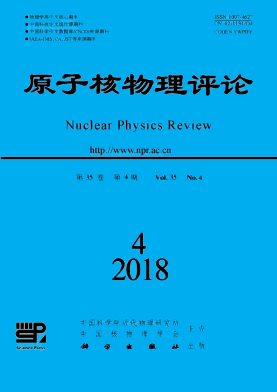|
[1]
|
ALLMOND J M. Phys Rev C, 2013, 88:041307. |
|
[2]
|
JOHNSON C W, BERTSCH G F, DEAN D J. Phys Rev Lett, 1998, 80:2749. |
|
[3]
|
LEI Y. Phys Rev C, 2016, 93:024319. |
|
[4]
|
KOTA V K B. Phys Rep, 2001, 347:223. |
|
[5]
|
ZELEVINSKY V, VOLYA A. Phys Rep, 2004, 391:311. |
|
[6]
|
ZHAO Y M, ARIMA A, YOSHINAGA N. Phys Rep, 2004, 400:1. |
|
[7]
|
WEIDENMÜELLER H, MITCHELL G E. Rev Mod Phys, 2009, 81:539. |
|
[8]
|
KOTA V K B. Embedded Random Matrix Ensembles in Quantum Physics[M]. Heidelberg:Springer, 2014. |
|
[9]
|
YODANOV D T, BALABANSKI D L, BIEROŃ J, et al. Phys Rev Lett, 2013, 110:192501. |
|
[10]
|
DE TAKACSY N B. Phys Rev C, 2014, 89:034301. |
|
[11]
|
ZHAO P W, ZHANG S Q, MENG J. Phys Rev C, 201489:011301. |
|
[12]
|
LEI Y, JIANG H, PITTEL S. Phys Rec C, 2015, 92:024321. |
|
[13]
|
WOOD J L. Physics, 2013, 6:52. |
|
[14]
|
FRENCH J B, WONG S S M. Phys Lett B, 1970, 33:449. |
|
[15]
|
BOHIGAS O, FLORES J. Phys Lett B, 1971, 34:261. |
|
[16]
|
WONG S S M, FRENCH J B. Nucl Phys A, 1972, 198:188. |
|
[17]
|
CAURIER E, NOWACKI F. Acta Phys Pol B, 1999, 30, 705. |
|
[18]
|
PEARSON K. Proc R Soc London, 1895, 58:240. |
|
[19]
|
JOHNSON C W, BERTSCH G F, DEAN D J, et al. Phys Rev C, 1999, 61:014311. |
|
[20]
|
LEI Y, XU Z Y, ZHAO Y M, et al. Phys Rev C, 2011, 83, 024302. |
|
[21]
|
PAAR V. Nucl Phys A, 1979, 331:16. |
|
[22]
|
CASTEN R F. Nuclear Structure From A Simple Perspective[M]. New York:Oxford University Press, 1990. |






 甘公网安备 62010202000723号
甘公网安备 62010202000723号 DownLoad:
DownLoad: